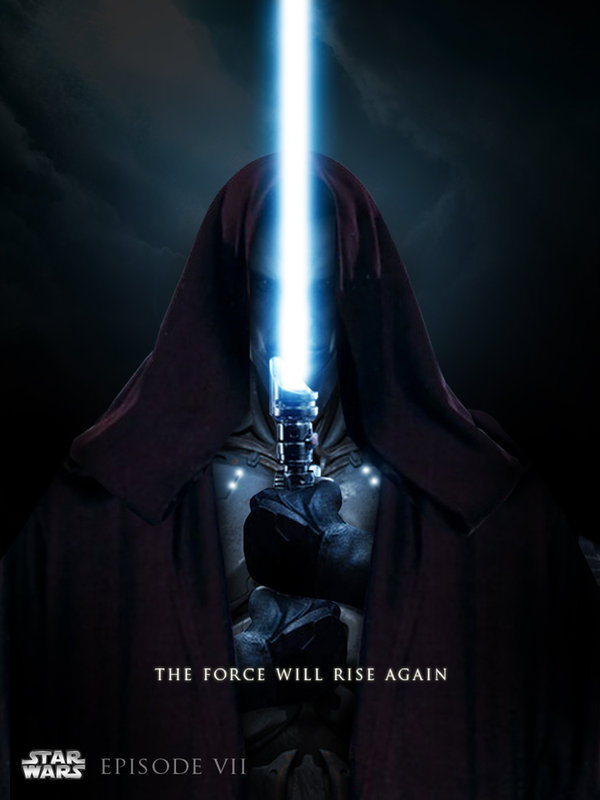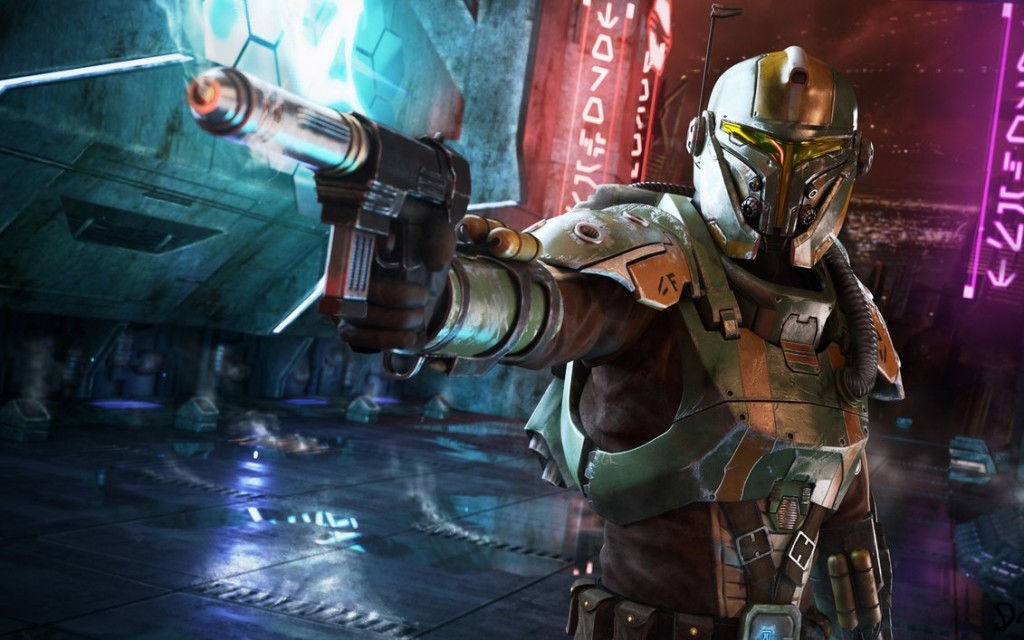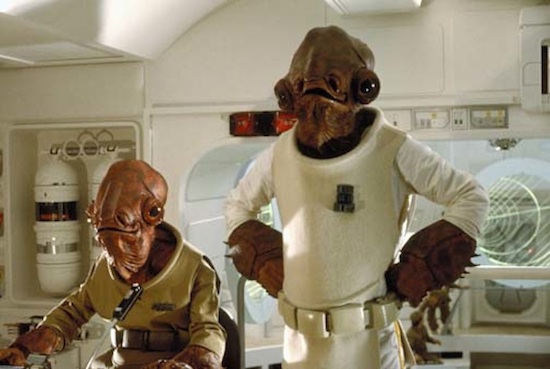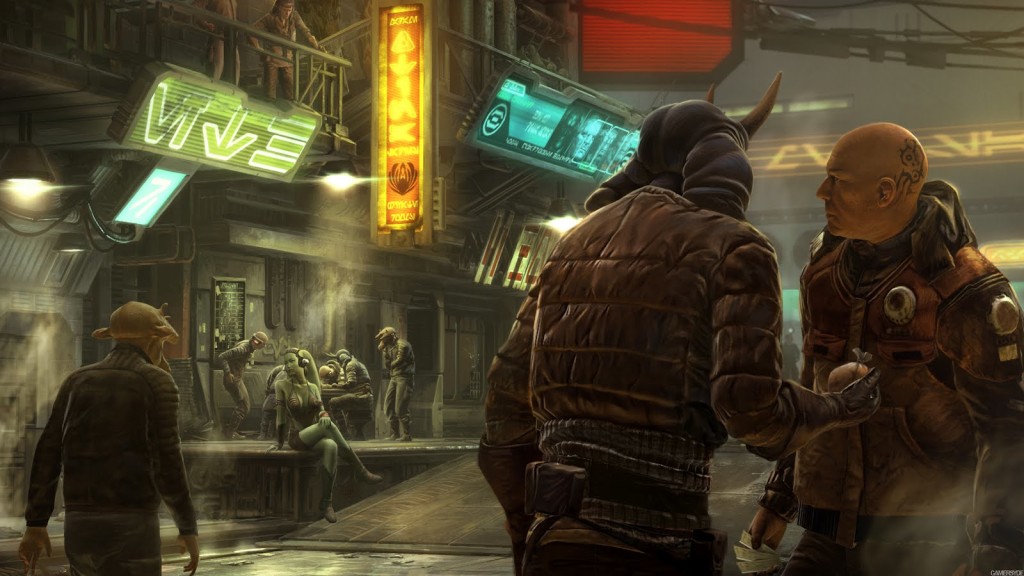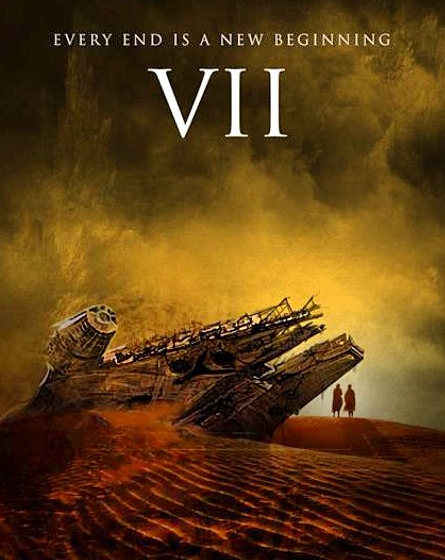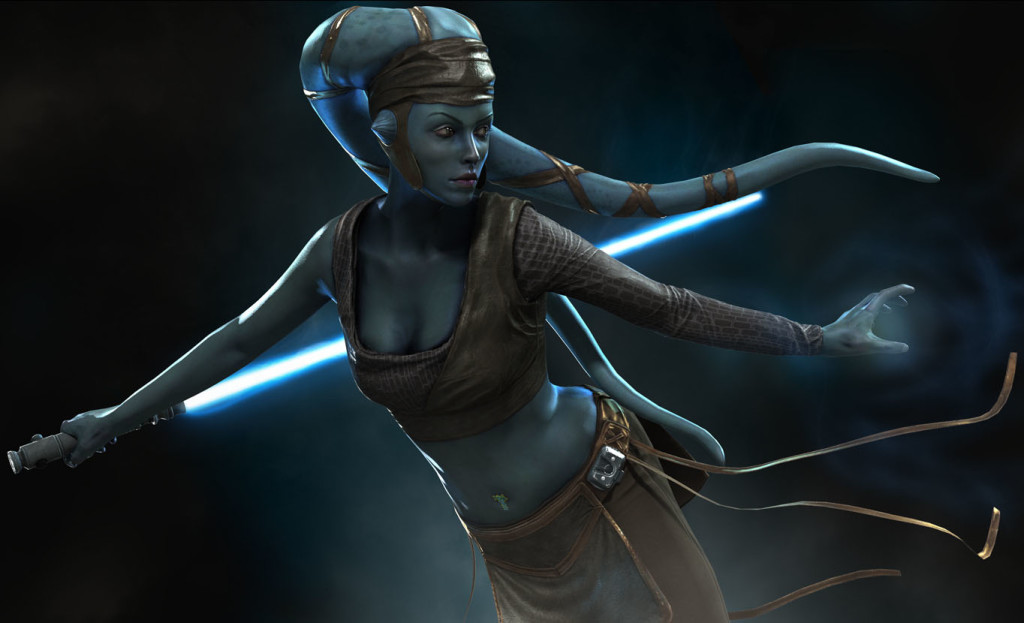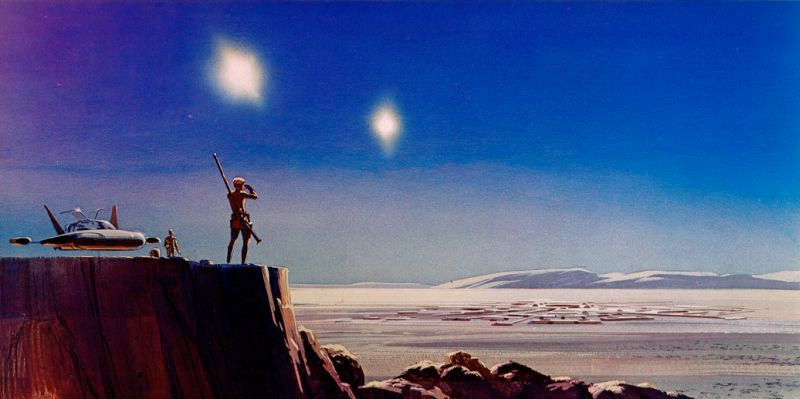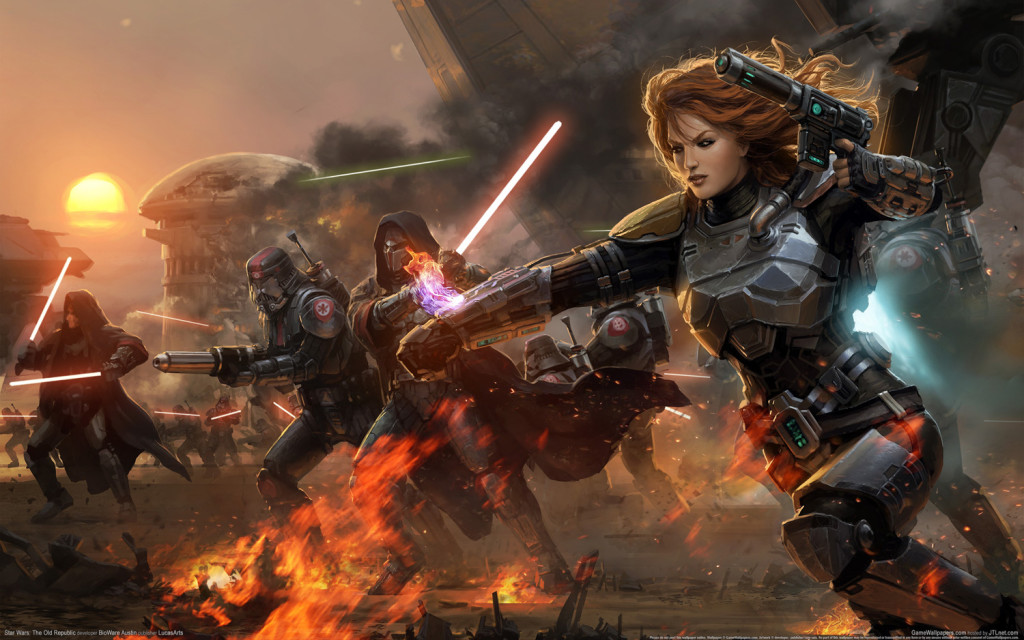Last year, in anticipation of the upcoming Star Wars films, I invited anyone who wanted to send in their own Star Wars script to do so. I would review the Top 5, and if one was really awesome, who knows, Disney might see it and get the writer involved in a future installment of the series. I received 20 Star Wars scripts in total. This week, I will review the best of those. Monday we got Old Weapons. Tuesday we had rising shadows. Yesterday we had the most badass lobster in the galaxy. And today, we’ve got twins, baby. Twins!
Genre: Sci-fi Fantasy
Premise: (from writer) With the fate of the galaxy in the balance, two-young Jedi and children to the heroes of the New Republic, must come to terms with their destinies as they set out to save the lives of millions from a dark force with deep ties to their family’s past.
About: Star Wars Week continues! Team Jedi wins! I was especially moved by Tom Albanese’s comment about how thoughtful Nicholas has been in the comments all this week. Yes, Nicholas’s script was 150 pages, but after I heard that, I felt like he deserved a shot. Let’s find out if he delivered!
Writer: Nicholas Saraceno
Details: 149 pages
As we continue to get closer to the greatest day in the history of the universe, December 21, 2015, the day Star Wars VII comes out, I must admit that I grow more and more worried about the script. Here’s what I know so far, based on three-quarter-truths that most news outlets agree are probably accurate.
Michael Arndt came in before the Disney-Lucasfilm deal was finished to create an outline for Episode 7. He was working off a treatment from George Lucas himself. Now as we know, Lucas only really understood Episodes 4-6. Everything outside of those films he only knew bits and pieces of. So this outline for Episode 7 was likely based on a few really flimsy ideas.
One of the strangest parts of this whole odyssey is that Arndt started writing the Episode 7 script before a director was chosen. As most everyone who’s worked in Hollywood knows, writing a script within the studio system without a director guiding it is pointless, because once a director comes on, he’s going to change everything anyway. But I guess they wanted to get a head start, which I suppose makes sense.
Needless to say, JJ was then chosen as director and started guiding Arndt to a script closer to his own vision. Somewhere during this process, something broke down. Maybe it was that Lucas’ flimsy idea for the film never worked in the first place. Maybe JJ and Arndt weren’t getting along. I don’t know. But soon, Arndt was fired and JJ (who started as a screenwriter and had a very successful career doing so) pretty much took over writing duties himself. He then rewrote the entire script within three months.
Now I think JJ is talented as shit. I’m so behind him helming this film. But this is Star Wars we’re talking about. You can’t write a good Star Wars film in three months (while prepping the biggest movie ever, while running a company, while shepherding 15 different TV shows, while putting the kids to bed every night). There’s too much imagination involved. Sure, you can slap something together. But if you want it to stand out, you need time. And since JJ had to start building sets and doing pre-viz, time is the one thing he didn’t have. So for better or worse, whatever he came up with in those three months is what we’re getting. And that scares me to shit, only because I believe Star Wars deserves more, and the franchise now has a history of bad films due to shoddy writing. I don’t want that trend to continue.
Nicholas Saraceno to the rescue? Maybe that’s asking to much. I will say, though, out of the four Star Wars scripts I’ve reviewed this week, Saraceno’s is the most faithful and exciting. It was the first time I saw the potential for what the new Star Wars films could be. It’s not without its faults though. It’s extremely ambitious and there’s a lot going on, but let’s see if Nicholas was able to wrangle it all in.
It’s 20 years after all that Ewok dancing. But despite yet another “Nyug Nyug” video going viral, not all is well in the universe. There’s still a lot of poverty, a lot of crime, and an upstart terrorist group known as the “Children of the Sun” which is using all this unrest to push its agenda.
Meanwhile, across the galaxy in the Spice mines of Kessel, a young man named Jacen Solo is following in his father’s footsteps, buying and smuggling spice between planets. On this particular run, one of the mine’s slaves sneaks on his ship, the Falcon, because she’s sick of working for nothing. Her name is Kayla. And although Jacen would never say it out loud, he thinks she’s darn cute.
Kayla seems like a nice girl alright, all the way until they get to Tatooine to sell their spice to Babbee the Hutt. That’s when Kayla reveals that the whole slave thing? FAKE! She played Jacen to get here. Before Jacen can figure out what just happened, the Hutt palace is attacked by the Republic, and everybody must run for their lives.
Somewhere in this mix, both Luke Skywalker and Jaina Solo (Jacen’s twin sister) show up, and everyone’s trying to get to safety. After they get away, it’s revealed that the attack was some kind of front to trick the Hutts into aligning with the Children of the Sun in a growing war, led by a nasty Sith-in-Training named Dragil.
If you’ve lost track yet, don’t worry, it gets more confusing. Luke meets up with his old friends-with-benefits Jedi pal, Mara Jade. Turns out, Luke’s 5 years late on Republic Credits child support. Because he be a baby daddy! Do I smell a “Jedi and Pregnant” reality show coming to TLC?
Not that that matters, because we learn that some other children, the Children of the Sun, are planning on blowing up Coruscant with a rare super-weapon made of red spice and a powerful Jedi infant, that infant being the son of the Emperor’s brother, who’s been hiding out on his estate on Naboo all this time! Jar-Jar? How could you let this one slip by!
Over the course of the story, Jaina is trying to get Jacen to be a Jedi. Jacen is trying not to fall in love with Kayla, who keeps changing sides. Luke is trying to train Jaina, who keeps doing non-Jedi things like making out with hot soldiers, and Han is trying to figure out why his family is so damn dysfunctional. This will all end in a Hutt battle on Naboo and a race to stop a super-bomb from destroying Coruscant.
Naturally, you can guess what my biggest problem with Children of the Jedi was. There were 8 billion things going on! You have to admire Nicholas for trying to go big, but in the end, he bit off more than he could chew. Actually, he bit off more than anyone could chew. Too many characters, too many storylines, too many twists and turns. I kind of felt like I’d been dropped into an Industrial-sized trash compactor along with every single Star Wars character ever created.
Part of the problem was that Children of the Jedi tried to invent a universe instead of just telling a story. That was the problem with the Prequels. They were trying to invent a universe. What I mean by that is that they had to set up a million things before they got to a single storyline that mattered.
I keep telling everyone that about Star Wars. Its genius is in that it wasn’t trying to be an epic. It jumped into a story that was already moving, that had already been set up many years ago. We were coming in when the good stuff started, after the Death Star plans had already been stolen. That’s what gave the story such urgency.
If Star Wars had, instead, tried to invent a universe, it would’ve started by introducing everybody on their home planets. It would have had the rebels come pick Leia up and say, “Hey, we want to go steal these Death Star plans. You in?” We would’ve met Han Solo smoking cigars with old friends on Planet Takator before saying, “Yo, I gotta go visit Tatooine.” Instead, Star Wars fast-forwarded over all that stuff and put us in the thick of the moment.
In fact, that’s the whole point of the Star Wars crawl. To get all that exposition taken care of in 60 seconds so that you COULD start in the middle of the action.
I’m not going to say that Children of the Jedi didn’t have any action. It had plenty. And there were instances where characters were introduced in the heat of the moment. But by biting off an unheard of character count, and having to then set all those characters up, Nicholas gave himself no choice but to repeatedly stop the story to let us know who these new people were.
I must remind everyone of The Power of Simple. When in doubt, simplify. This script should’ve been Jacen Solo’s story through and through. He was the most interesting character. He had the most going on. We needed to strip away all those cumbersome non-essential plotlines and focus on his deal. That’s how I would’ve approached it, at least.
Overplotting is kind of like throwing a grenade. There’s the explosion that kills anyone within the explosion radius. But those aren’t the only deaths. Frags also shoot out, hit people, and kill them slowly. One of frags of an over-plotted story is confusion. I just wasn’t always sure what was going on.
For instance, when Jacen originally arrives at the Hutts to trade spice, Luke Skywalker is hiding out in the crowd. What he was doing there I still don’t know. I know that Nicholas knew. But by forcing the reader to sift through and remember so many things, even the simplest things can be hard to understand. All I could think was, “How long has Luke been here? Does he always just pretend to be a bad guy and hide out at the Hutts for no reason? Has he been here for days? Months? Years?” Maybe he has early onset dementia and is trying to save Han, who’s frozen in carbonate?
I think identifying the solution here is easy. This script needs a clear main character on a cleaner, easier-to-understand journey. I understand why Nicholas ran into this problem. He loves the original characters so much and wanted to find a way to get them in there. But if characters are only in a story because a writer wants them to be, they never feel quite right. Characters only feel right when they’re organically grown along with the story. This is a problem that not only Nicholas had to deal with, but JJ will as well. I wish him luck!
Script link: Children of the Jedi
[ ] what the hell did I just read?
[x] wasn’t for me
[ ] worth the read
[ ] impressive
[ ] genius
What I learned: The more complicated the plot, the less double-crosses work. Double-crosses (characters being on one side then switching over to another) can be fun – a great surprise to shock the audience. But the more complicated a plot is, the less effective they are, because we’re trying to figure out what’s going on period, much less figure out who’s on who’s side. When Slave Kayla kept changing sides, I got confused and stopped keeping count. I didn’t know if she was good or bad. In a simple plot, I would’ve figured it out, but because I had to keep track of so many other things, multiple double-crosses were information overload.
Last year, in anticipation of the upcoming Star Wars films, I invited anyone who wanted to send in their own Star Wars script to do so. I would review the Top 5, and if one was really awesome, who knows, Disney might see it and get the writer involved in a future installment of the series. I received 20 Star Wars scripts in total. This week, I will review the best of those. Monday we got Old Weapons. Yesterday we had rising shadows. Today we have the most badass lobster in the galaxy!
Genre: Sci-fi
Premise: (from me) Months after the Empire has been torn down, Admiral Ackbar and a small derelict crew chase after the last Star Destroyer, which harbors an opportunistic commander who may or may not have ties to the Force.
About: This is actually the first script I’ve received from Scott F. Butler, so I don’t know much about him other than he really likes Admiral Ackbar!
Writer: Scott F. Butler
Details: 124 pages
In the name of Salacious Crumb, I don’t know if Star Wars Week is going to survive past today. I’m getting a lot of e-mails from people excited I’m doing it, but not a lot of those people seem to be participating in the discussion. In a half-stolen line from one of the commenters, the comments section for this week is starting to look like the Dune Sea.
With that in mind, I had to make a hard decision on which Star Wars script would be the last. I couldn’t make it through another 150+ page script, so that eliminated Children of the Jedi. I liked that someone would tackle an Emperor origin story. But Holy schnikees, the first five pages are all description! Not even action description. Just description.
That left me with The Admiral’s Vendetta versus Secrets of the Ancients. Admiral’s Vendetta got a little more love in the Group Posting on Saturday, so I decided to go with that.
Strangely, our author has decided to title this episode “Episode 6.5.” I found that odd, since it relegates the script to “never having a chance” status (who’s going to spend 200 million dollars on a half-sequel?). Then again, since Disney has already mapped out an outline for the next three films, none of this week’s scripts had a shot at a direct translation anyway. It was more about finding a writer who could nail a Star Wars story and getting them noticed.
So “Vendetta” takes place six months after Return of the Jedi. The Rebels are trying to clean up the galaxy, and Admiral Ackbar (that iconic lobster looking dude with the awesome voice) has spotted the last of the Star Destroyers trying to get away. He wants to bring in the ship’s commander and, not unlike they did with all those Nazis, make him pay for his war crimes.
The commander in question is a dude named Ti Treedum, who seems to have a little of the Force in him. Treedum is actually a pretty interesting guy. He never saw eye-to-eye with the Emperor, but he doesn’t like the Rebels either. He sort of wants to start his own government, and to do that, he needs to learn how to become a Jedi, something he can accomplish with the help of one the Emperor’s Imperial Guards.
So he and this guard head out to meet up with another bad guy who, I believe, is going to help Treedum get his Jedi schwerve on. Admiral Ackbar is so set on making sure this doesn’t happen, however, he eschews the red tape that would prevent him from following them and goes rogue, teaming up with an upstart pilot named Lanza, and a pirate named Kara Kara.
They take the WA-77 pirate ship (piloted by a humanoid lizard named Slay who speaks in slithers) and are finally able to catch up to Treedum and his Imperial Guard pal. It’s there where Ackbar demands that Treedum turn himself in, but as you might imagine, Treedum has other plans. A battle ensues, which will end with the future of the galaxy in doubt!
The Admiral’s Vendetta felt like one of those scripts with good intentions that hadn’t figured itself out yet. And a Star Wars movie is not the kind of movie that works un-figured-out. There are so many aliens and so many planets and so much exposition and so many storylines, that if you’re not on top of your game and telling a confident story every step of the way, the story can quickly get away from you.
This happens with any complicated story really. For complicated stories to work, you need to workshop them. You need to give them to people after every draft and see if what you’re trying to do is making sense, if it’s all followable. One wonky or confusing plotline can doom a script. Which is why, I’m realizing, writing these Star Wars scripts is so hard.
For example, I didn’t understand what Ti Treedum was really. Was he a Jedi? Or just someone who wanted to be a Jedi? In one scene he’s able to use his force-powers to choke Lanza. In the next, he’s baffled about lightsabers. That’s fine if he’s an apprentice, someone with Jedi powers who’s trying to learn to become a Jedi (or a Sith) but that needs to be made clear somewhere.
See, with every unclear plot point, there are repercussions, “cracks” if you will, that spread out throughout the rest of the script. Because I wasn’t sure if Treedum was a Jedi, I wasn’t sure what he was trying to do. And because I didn’t know what he was trying to do, I didn’t know why it was so important for Ackbar to get him. This entire script is based on Ackbar’s need to capture Treedum at all costs. But if Treedum’s just some bumbling wannabe-Jedi, who cares? How much damage can he really do?
And that was “Vendetta’s” biggest mistake. The stakes weren’t very high (or clear for that matter). What happens if we stop Treedum? Nothing, really. We stop some unclear future problem. In Star Wars, we’re trying to stop the most technologically advanced weapon in the universe. Those are stakes. Had, for instance, we been told that Treedum was a super badass with the ability to raise armies and take over the galaxy, I would’ve been more invested in stopping him.
On top of that, there were too many meandering sequences in the story. Remember, sequences in action movies are about setting a goal, stakes, and adding urgency. They’re little mini-movies that need to be clear. In the original film, our characters get stuck in a Death Star. It’s clear their goal is to get out. That the stakes are they’ll die (along with many others). And the urgency is that someone’s always on their tail.
When we finally get to Treedum’s ship, there’s this overlong sequence where we’re just sitting around with the two ships (good guys and bad guys) talking to each other. “You surrender.” “No, I don’t want to.” It felt like a petty fight between five year olds. This is Star Wars. There should be no ships talking to each other through video-links. People need to board ships, to go after people, to get into some conflict!
And when conflict did finally arrive, it dipped up and down in waves. A sequence has to build up to a climax (again, our characters in the Death Star – they’re building towards getting out – the climax occurs when they make their run for it). There was no build here. It was, again, a lot of back and forth, as if Scott wasn’t quite sure if, or when, he should pull the trigger.
That might be the best way to describe “Vendetta.” The script always felt like it was holding back. It never had its “stuck in a trash compactor” moment. The conflict was only half-realized. I wanted these characters to engage, but it seemed like they were more interested in talking about engaging.
That’s not to say the script didn’t have its moments. It was probably the most creative of the bunch. The half-underwater city of Dac was really cool. And the port city with all the pirates where they had to find a ship, although an obvious reference to Tatooine, felt like its own unique world, which is what I’ve been looking for with these scripts.
I liked the Skull ship, the triple light speed jump, and Kara Kara and Slay. Making her the female Han Solo was a nice touch, since it’s impossible to create another Han Solo in the Star Wars universe without it looking like you’re directly ripping off Han Solo. Kara Kara felt like her own person. And that was good. But man, I wish this story had more bite!
You know I worried, at first, that there would be no true screenwriting lessons to come out of this week. That the only things we’d be able to learn were Star Wars specific (a sexualized teenaged lesbian relationship at the core of a Star Wars film probably isn’t the best way to go). But now that I think about it, I realize that every writer is dealing with the exact same issues these Star Wars writers are dealing with.
Whatever genre you like to write in, that genre is your “Star Wars.” Just like that iconic film, your genre has done everything already. Just like these Star Wars writers can either write clones of their favorite Star Wars films or push the franchise into new territory, you can either write clones of your favorite genre films or push into new territory.
It isn’t easy to do, to “try.” It’s so much easier to fall back on what’s been done before because it doesn’t take any thinking on your part. But if you do go that extra mile and seek out those new ideas, and you do that consistently throughout your script, I guarantee you, you’re going to write something that readers and audiences remember.
Script link: Star Wars: The Admiral’s Vendetta
[ ] what the hell did I just read?
[x] wasn’t for me
[ ] worth the read
[ ] impressive
[ ] genius
What I learned: I leave this debate to all of you. Should you include adverbs in your writing? Some writers HATE them. Indeed, they can read clunky. But sometimes they feel like the only option. For example, here’s a line from “Vendetta:”
The Gunship laserfire sprays impotently into blackness.
Should the word “impotently” be here? Or does the sentence pack more punch without it? Or does the adverb add enough of a descriptive element to justify its existence? Weigh in in the comments section. I’m eager to get a consensus on this.
To keep Star Wars Week going, post: “Team Jedi” in the comments.
If you want me to move on, post: “Team Sith,” even though you probably don’t know what that means.
Last year, in anticipation of the upcoming Star Wars films, I invited anyone who wanted to send in their own Star Wars script to do so. I would review the Top 5, and if one was really awesome, who knows, Disney might see it and get the writer involved in a future installment of the series. I received 20 Star Wars scripts in total. This week, I will review the best of those. Yesterday we got Old Weapons. Today we get a rising shadow!
Genre: Sci-fi Fantasy
Premise: (from writer) After the murder of her master, a young Padawan subverts the Jedi Council’s wishes in order hunt down his enigmatic killer before she can put to use a powerful and ancient Sith artifact.
About: Tom Albanese has had a couple of scripts reviewed on the site before and keeps coming back for more. He’s a great guy and always up for some constructive criticism. One of his scripts actually went on to get optioned. He’s a writer I’ve been watching for awhile.
Writer: Tom Albanese
Details: 114 pages
If you’re like me and you watched the prequels, you were probably one of the many people who said, “I could write something better than that.” And that’s exactly what this week’s writers have set out to do, prove that with a little time, they could write something better than that lazy George Lucas could.
Yesterday proved that it isn’t as easy as it looks. Not only can one quickly get lost in this universe, but amongst all that information one has to set up, you also have to come up with a story. That was the big fault of the prequels. They weren’t telling stories. They were telling history. Which is exactly why the three films felt like really glossy sci-fi fantasy documentaries. Not a whole lot ever happened.
What I’m looking for, this week, is someone who can capture the intensity and the fun of those original films. Find a story with great new characters that contains urgency and stakes. That was the secret sauce of the original Star Wars films.
While Rise of the Shadows is definitely an improvement over yesterday’s entry, it makes some mistakes pretty early on that hurt it. After a nice opening where a Jedi master is killed in front of his apprentice, a feisty young woman named Ralia, we head back to the Jedi Council on Coruscant. And this is where, unfortunately, we spend a good 40 minutes. Coruscant is firmly entrenched in the prequel universe, and I still contend that it leaves everyone with a bad taste in their mouth. It shouldn’t be in any sequels.
But anyway, an evil former Jedi named Gena Kortana is the one who killed Ralia’s master, all for an old piece of technology that can raise the dead. But Gena can’t use the thing until she regains her powers. To do that, she must find the person who took them from her, which just happens to be our old Vapor Farmer Friend, Luke Skywalker, who’s now in his 70s.
So Gena invades the Jedi Palace with a couple of nasty bounty hunters and somehow kills almost all of them. She’s able to kidnap Luke and head off to a dangerous unknown planet in order to get this gizmo to work. The ever-feisty Ralia, still pissed that this bitch killed her master, is able to find out where the planet is and go after her.
But she gets there too late. Gena is able to raise from the dead a really evil Sith Lord named Darth Tauren, who grants her her powers back. Ralia tries her best to get revenge, but only ends up killing Luke, who, to his credit, dies before having to watch the finale to last night’s The Bachelor.
Ralia is able to escape with her toes in tact, but now that Gena and Darth Tauren have this Sith-Raising machine at their disposal, they agree that there’s one guy they really want to see back in business. A certain black-clad mechanically breathing dude who loves telling people his familial relations to them. To be continued!
So like I said, this was better than yesterday’s entry. At least this time around, we got some originality, a new story with mostly new characters engaged in a new plot. I liked that. But I’m starting to notice a trend here. It seems in almost every new Star Wars 7 idea I hear, the new main character is a young woman.
Does this mean every writer thinks alike? That we all follow the same thought patterns and come up with the same ideas? That we’re all really unoriginal? Or is this really the way to go? Because whenever I see the idea, I’m immediately reminded of “The Next Karate Kid,” where they tried to replace Daniel-san with a girl. And oh, how cheesy it felt.
Not that Rise of the Shadows was cheesy. I think it was rather un-cheesy, which is easier said than done when writing a light sci-fi fantasy space opera. But what doomed this script for me was all the stagnation.
40 pages of this script took place inside the Jedi Temple, probably one of the more boring places you can place a story. Especially when you’re talking about Star Wars, where you can literally place your characters anywhere in the universe.
And it wasn’t just the setting. It was that our characters were standing around TALKING in the Jedi Temple all the time. This was one of the huge problems with the prequels – that everyone was always STANDING AROUND TALKING. Look at the original Star Wars. There isn’t a lot of standing around and talking. There’s always doing. There’s moving forward. There’s thrust.
In the one place where there is standing around – Luke’s introduction on Tatooine – there was a sense of resistance and conflict as Luke didn’t want to be there. Even as we were there, we were being pulled somewhere else. Here on Coruscant, everyone seemed really content with their surroundings, save for Ralia, who admittedly wanted to avenge her master’s death, but just couldn’t find the means to do so.
We even have flashbacks to tell the backstories of our characters. No no no and no again! Flashbacks not only stop your script – they literally MAKE YOUR SCRIPT GO BACKWARDS. This is BAD. But the worst part about it was that flashbacks weren’t even needed. I needed one line to know that Ralia’s master picked her over Gena. I don’t need to go back and see it happen. Guys, if you need to convey something about your characters, make sure you’ve exhausted EVERY AVENUE before you consider a flashback. And then, please, still don’t write a flashback.
But the flashback represented more than backwards-ness. Star Wars has always been at its best when it moves. So to choose a flashback, a device that is guaranteed to stop the movement of your script, is a sign that you don’t understand what makes these movies work! In short, we needed less standing around on Coruscant and the Jedi temple, and more flying around the galaxy.
What about the characters? Anything good? Outside of Gena, I don’t think any character popped. In fact, I think great characters were ruined. Luke Skywalker is relegated to being dragged around half-conscious for most of the movie. This is supposed to be the greatest Jedi who’s ever lived and he’s taken down by a non-Jedi with little resistance and dragged around in a half-drugged state? NO! You can’t do that to a historically great character. It would be like putting the Godfather in an Assisted Care Facility and having him drool all over himself for 30 minutes. No way!
But anyway, the reason Gena works is because she’s the most active. She’s the one who’s driving the story. Which is a solid approach, since Darth Vader, our original villain, is the one driving the story in Star Wars and Empire. But there were no PERSONALITIES outside of Gena. Ralia was active and always wanted to do something, but I never saw anything that made her unique, original, and stand out as her own person.
When Obi-Wan does the Jedi Mind trick as they’re trying to enter Mos-Eisley (“You don’t need to see our identification”), we really get a sense of who this guy is. I needed distinctive moments like that from characters in “Rise” to really individualize them. But I never got them. Solely sending your characters out to save people or get upset when their masters are killed isn’t enough. Anybody will act that way. What does your character do (how do they act) that nobody else in the world does? That’s what will make them stand out.
Props to Tom for writing something that captured the heart of Star Wars. But we needed way more action, more adventure, as well as more distinctive characters, to really make this Episode 7 pop. What did you guys think?
Script link: Rise of the Shadows
[ ] what the hell did I just read?
[x] wasn’t for me
[ ] worth the read
[ ] impressive
[ ] genius
What I learned: You need to pick a defining trait for your character and really hit on it throughout the script. Han is selfish. Obi-Wan is wise. Chewbacca is loyal. These are the personality traits that will define your character to the audience. If you don’t repeatedly hit on them, the characters start to come off as personality-less. Which leads to bland characters. Bland be bad.
Last year, in anticipation of the upcoming Star Wars film, I invited anyone who wanted to send in their own Star Wars script to do so. I would review the Top 5, and if one was really awesome, who knows, Disney might see it and get the writer involved in a future installment of the series. I received 20 Star Wars scripts in total. This week, I will review the best 5. Let’s hope we find a winner!
Genre: Sci-Fi fantasy
Premise: (from writer): 1000 years in the future of the Star Wars universe, a young female fugitive from Tatooine and the last Sith Lord must travel to the abandoned city world of Coruscant to retrieve the location of an ancient planet-destroying superweapon: the Galaxy’s only hope of overthrowing the totalitarian rule of a sinister New Jedi Order.
About: The mysterious Ellen Starkweather seems to get hyped a lot in the comments section, yet no one knows where she comes from or where she gets her fans. Can Scriptshadow readers solve the mystery? I reviewed one of Ellen’s scripts awhile back. Let’s see what she has in store for us today…
Writer: Ellen Starkweather
Details: 157 pages!
As you’d expect, I have some MAJOR opinions about Star Wars, way too many to get in to here. But one of my strongest opinions is that in the two best Star Wars films, A New Hope and The Empire Strikes Back, the films are all about urgency. They move quickly because they’re both chase films, with Darth Vader always on our heroes’ tail. The problem with the prequels was that they ditched this formula in favor of slow introspective mythology lessons. It wasn’t pretty.
So when I opened this up and saw 158 pages, my head sunk. 158 pages?? That pretty much ensured there would be zero urgency. And it’s not the only Star Wars script of the bunch with that kind of page count. There’s another one that’s 150 pages! I’m telling you, the Star Wars formula that works best is one that keeps things moving. BUT I’ll gladly eat my shorts if Ellen Starkweather can prove me wrong. Let’s see if this 160 page epic changes my opinion…
It is 1000 years after the end of Episode 6, but you might not have guessed it, since we start right back on our favorite little dusty planet, Tantooine! It’s here where we meet a couple of our Jedis, Master Mahrel-Dee Goodweather, a middle-aged woman, and Temlin, a 16 year old girl who’s just starting to realize her Jedi powers. Neither of these two know each other yet. But they will. Oh yes, they will….
So in this episode, it’s kind of like Jerry Seinfeld’s Bizarro World, as the universe has been flipped. The Republic is firmly in control, but they’ve become such a dictatorship that, without even knowing it, they’re now the bad guys. Joining the Dark Side is the new hip “rebellious” thing to do. And that’s what Temlin and her land-speeder racing buddies are into.
Eventually, Master Mahrel-Dee goes looking for this new Jedi girl, possibly for training, but Temlin is able to get away and go to Yoda’s old stomping grounds (or mushing grounds?), Dagobah, where she’s been sent to meet someone important. It’s there where she finds a dark-cloaked 900 year old man who happens to be a Jedi himself! Or a Sith Lord, depending on your perspective.
It doesn’t take us too long to figure out that this 900 year old guy is Luke Skywalker (yes, you read that correctly), and Luke wants to bring Temlin to Coruscant to look for some old super-weapon plans (if you’re thinking these plans have something to do with Death Star 3.0, you’d be correct). She’s not so sure, but she doesn’t have many other options (it’s not like there’s a bar on Dagobah to think things over), so she says ‘why not.’
Meanwhile, Master Mahrel wants to get her hands on Temlin because Jedi chosen-ones are at a premium. So, about a hundred pages into the script, she starts chasing the two through the galaxy and is finally able to nab them. It’s then that Luke and Mahrel get into a lightsaber duel and she kills Luke the exact same way Vader killed Obi-Wan!
But a ship collision follows and Mahrel is burned over 80% of her body. She wakes up three years later (yes, three years), and is now wearing (yup, you guessed it) a white female Vader suit. Oh, and while she was asleep, a new Death Star was built! And hence we get another final-act run at our favorite robot moon, where it is once again, sadly, destroyed.
Okay, where do I start here! Let’s start with the good. The page count here is way too long. But at least the script was easy to read. Most paragraphs were two lines or less and the dialogue moved along quickly. While I wasn’t always thrilled with the direction the story took, Starkweather was usually able to move us through each sequence quickly, whether it be a speeder race on the now overrun-with-jungles Coruscant, Temlin trying to snatch Boba Fett’s old laser gun from the Sarlac Pit or the occasional space battle.
Old Weapons has one major problem though. It uses the old films as its crutch. The entire movie is a mish-mash of the plots from the original trilogy. We have our hero growing up on Tantooine, her family dying, having to go to the Cantina in Mos Eisley, going to Dagobah where someone’s been hiding for 900 years, getting captured on the bad guy’s ship, to the older wiser Jedi getting struck down by another Jedi, to a Jedi getting burned to death and needing to live inside a life-support machine, to a Death Star being made and having to be destroyed. There was so darn little originality in this script that, if I’m being honest, it was hard to take it seriously.
It all boils down to the script being too “fan boy.” What I mean by that is the writer clearly loves the original films so much that they can’t think beyond them, and therefore every decision and choice is in service to those movies somehow. Why, for instance, do we have characters trying to get Boba Fett’s gun in the Sarlac Pitt if it has nothing to do with the story other than it’s cool to bring up Boba Fett?
Then there’s Luke Skywalker. Luke Skywalker’s been alive for 900 years? I mean, I guess he has the force in him, and we’ve established that allows beings to do things they otherwise wouldn’t be able to do, but this just rang false (and somewhat goofy) to me.
I wanted to see something NEW brought to the table. I wanted a different story to experience, not a rehash of everything I’ve already seen. There are hints of that here. Obviously, our main young Jedi is a girl. The new “Darth Vader” is a girl. But I don’t think you can just change the sex and everything be new and different.
On top of all this were some… curious choices. When we meet Jedi Master Mahrel-Dee, it’s insinuated that she just got out of a three-way with two younger Jedis. Also, 16 year old Temlin is in a relationship with another 15 year old girl, one who she plays sex games with (it’s implied) where one of them dresses up like “General Master Solo.” Then later, one of our characters is a suicide bomber who blows up a bunch of people.
Choices like this really worried me because the tone of Star Wars is a clear one. It’s light fun entertainment. I don’t know why we’re implying sex on any level, much less playing dress up in a sexualized lesbian teenage relationship or having three-ways. And suicide bombers, while maybe a little easier to buy in this universe, are too complicated an idea for the target audience (young children) to grasp.
Tone is something I continue to see amateurs struggle with. They often throw anything they think of into their stories without considering how it fits in with the bigger picture. It’s like they take the stance, “If I think of it, then it’s tonally consistent.” That’s not how it works. I’m not going to have Eve imply she wants to give Wall-E a blow-job just like I’m not implying three-ways in Star Wars.
Then there are just the geeky things that I personally didn’t agree with. I’m not sure you mess with the opening crawl (having the letters turn blood red and say everything you just read was propaganda). I don’t think you want to talk about midi-chlorians, as it was widely agreed that this was a huge misstep for the franchise. Coruscant being run by cannibals who strap human skeletons to the front of their ships felt exactly like the Firefly villains, to the extent that it was almost a direct ripoff.
I think that’s my biggest beef here. There was no originality in Old Weapons. It was all rehashing storylines and characters we already knew. For Star Wars to grow (and for any script to grow), it needs to explore new ideas and invent its own story. I kept waiting for that to happen with Old Weapons but it never did. ☹
Screenplay link: Star Wars: Old Weapons
[ ] what the hell did I just read?
[x] wasn’t for me
[ ] worth the read
[ ] impressive
[ ] genius
What I learned: “Writing light” is when you write very sparse paragraphs (one or two lines tops). “Writing heavy” is the opposite (Thick paragraphs of 4-5 lines). When you “write heavy,” the page count tends to be lower, since your lines aren’t spread out as much. “Writing light” creates the opposite effect. The excess carriage returns take up more space and can easily add 10-20 pages to your script. So there’s this debate whether one should “write heavy” to keep the page length down, even though it means a harder read, or “write light,” which jacks up the page count, but is much easier for the reader to get through. Here, Ellen obviously took the “writing light” approach and added a good 20 pages as a result. I admit it was easier to read than if this was 140 pages written “heavy,” but the reality is, 160 pages is just too damn many, period. My advice is: this is screenwriting. You have to do both. You have to write light with a heavy writer’s content. Let me give you an example:
The robust trees and their exposed roots snake through the yard like curious animals, adding a deep unexpected texture to the front of the house, the kind of anomaly that screams “unnatural.”
You can just as easily write…
The trees’ gnarly exposed roots snake unnaturally through the front yard.
What I learned 2: If there is a large LONE time-jump forward in the second or third act of your script, there is probably something very wrong with your story (and one of the biggest tell-tale signs that you’re reading an amateur). Large time jumps happening once your story gets going almost NEVER work unless you’re established a time-jumping rhythm throughout your script (and this is one of many time jumps, such as you’ll see in a movie like Braveheart).
Star Wars – Old Weapons – by Ellen Starkweather – MONDAY REVIEW!
Logline: 1000 years in the future of the Star Wars universe, a young female fugitive from Tatooine and the last Sith Lord must travel to the abandoned city world of Coruscant to retrieve the location of an ancient planet-destroying superweapon: the Galaxy’s only hope of overthrowing the totalitarian rule of a sinister New Jedi Order.
Star Wars – Secrets of the Ancients – by Robert Cornero
Star Wars – The Admiral’s Vendetta – by Scott F. Butler
Star Wars – Children of the Jedi – by Nicholas Saraceno
Star Wars – The Emperor (an origin story of the Emperor) – by Zachary Stevens
Star Wars Ep 7 – Rise from the Shadows – by Tom Albanese
Logline: After the murder of her master, a young Padawan subverts the Jedi Council’s wishes in order hunt down his enigmatic killer before she can put to use a powerful and ancient Sith artifact.

